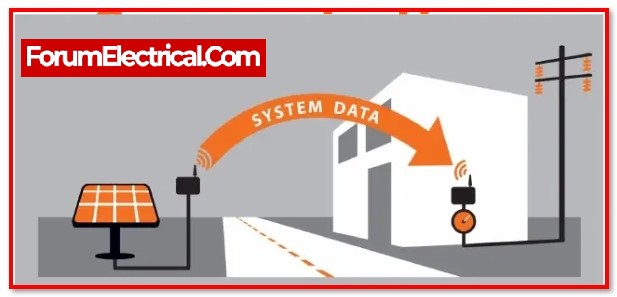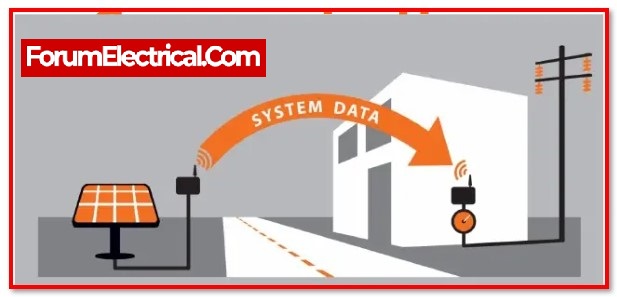The solar monitoring systems are an efficient method to assess the effectiveness of the solar array’s solar panels as well as the amount of electricity they produce. They are even able to assist in locating specific trouble spots in the system in case that identified.
Solar monitoring systems gather data regarding the amount of energy that is generated by the system, often via the use of solar inverters (or) charge controllers. This data may then be used to do various calculations. The direct current (DC) that is produced by the solar array is changed into alternating current (AC) so that it may be used inside the house.
There are a lot of different ways that this data may be retrieved and saved; some systems provide internet connection by Wi-Fi and/or Ethernet, and other systems add cellular capabilities so that can access system monitoring even when the internet isn’t working well.
Solar panel manufacturers provide a variety of different monitoring methods and systems, which may either be included with the equipment or purchased separately as an add-on. The following sections provide a listing of some of top suggestions for monitoring systems, divided along by both
- The type of system and
- The brand.
1). Grid-Tie (on-Grid) Solar Panel Monitoring Systems
What is Grid-Tie Solar Panel Monitoring System?
A grid-tied solar system is one that is connected to the national electrical grid. They are the most simple, affordable, and prevalent type of solar system since they may function without being connected to a solar battery.
A solar power system that is connected to the utility grid is designed to collect solar energy for the purpose of being stored in that network. Because of this, users will always have access to energy anytime it is required.
If it already has accessibility to a utility grid, installing solar panels that can connect to that grid may provide with a variety of advantages. Because there is no need to buy batteries in order to store the electricity that is produced, the initial investment is less. The storage facility is provided by the electric grid.
Grid-tie monitoring contributes to the efficient operation the complete solar system by transferring data that is used to monitor and control the output of solar panels.
How does a grid-connected system operate?
The simplest form of solar system is one that is connected to the grid. Off-grid & hybrid solar systems need various setups and equipment. The basic concept behind a grid-tied system is to link a building to both the solar array and the main electrical grid so that power from either (or) both may be utilised.
Any excess electricity produced by the solar panels which is not immediately used is automatically transferred into the main grid since a grid-tied system lacks energy storage technology. When energy use exceeds energy production from the panels, the system automatically takes additional power from the electrical grid to make up the difference.
2). Off-Grid Solar Monitoring Systems
What is Off-Grid Solar Panel Monitoring System?
Optimising battery life is essential for an off-grid system to function smoothly and effectively. An off-grid solar monitoring device measures the battery’s level of charge and determines when charging should start or stop.
Reducing the time and expense of site visits requires the ability to remotely monitor PV installations.
Off-grid systems, which are often located in even more difficult-to-reach or distant locations, such as those used for
- Agricultural,
- Mining,
- Communications, and
- Industrial automation,
certainly, have greater requirements for functionality.
Off-grid systems that are more widely available may also profit from being left unattended for extended periods of time. This comprises
- Pumping systems,
- Lighting, security,
- Traffic monitoring,
- Recreation (marine, cottages, RVs), and
- Cell towers.
Additionally, certain municipal and residential applications with on-site staff may be advantageous if an installation or another person knowledgeable about the system is not accessible.
- Several battery-based residential,
- Battery backup,
- Rural electrification (homes, hospitals, and schools), and
- UPS systems
that are momentarily unattended may call for remote visibility into system parameters.
Requirements of Off-Grid Solar Panel Monitoring System
Off-grid renewable energy system need for remote monitoring & control is being driven by the requirement to:
- Reduce the expenses of remote site visits.
- Receive immediate notification and take action to minimise power outages at a location.
- Make troubleshooting easier
- Off-site custom settings for the programme
- Remote firmware update
Remotely monitoring off-grid systems is considerably difficult than monitoring grid-tied systems because of both the energy output of the solar PV array and the battery’s current charge/discharge condition.
3). Hybrid Solar Monitoring System
A solar power system that combines
- Solar panels,
- A hybrid inverter, and
- A battery banks
is known as a hybrid solar system. The batteries store energy for later use as the solar panels transform sunshine into power.
With the ability to operate both on and off the grid, hybrid solar systems enable continue using solar electricity even when the grid is down.
What is the operation of a hybrid solar system?
A solar hybrid system is a form of renewable energy system that produces clean energy for the house using solar photovoltaic (PV) panels.
A hybrid solar system automatically alternates between drawing electricity from the grid, batteries, and the sun. It might avoid using grid electricity during peak hours, saving money on billing.
The solar panels on the top (roof) of the building are used to create clean energy, which is then stored by the system.
The system automatically switches on & powers all of the home’s critical loads during the storm (or) power loss and maintaining the operation of the refrigerator, lights, and phones and iPad.
Monitoring and control of solar-powered systems
The structures that include renewable energy sources & energy storage require extra management and monitoring to ensure efficient operation and to get rapid return on expenditure.
Monitor energy output and identify issues and corrective action
Owners should consider the following in order to comprehend how power is consumed and how it might be optimised:
- Observe how the electricity generated by photovoltaic (PV) systems is used by the loads, stored, (or) fed into the grid.
- Track and evaluate PV production trends together with load consumption patterns.
- Do the computations to determine the financial gains from reducing grid energy usage.
- A PV monitoring system need to provide asset management functions as well. A performance evaluation of the PV system should be part of this, as well as the quick reporting of issues and the identification of drifts or malfunctions.
Power quality disturbances, particularly harmonics and imbalance, should be detected and monitored since PV inverters might impact the electrical installation’s power quality.
Depending on requirements & objectives, manage local sources & loads
Control tasks are often needed when integrating local sources, such a PV system, with an electrical infrastructure in a building. These tasks will mostly be determined by the local resources that are accessible, by the agreement with the local energy provider, and by the installation type –
- Grid-connected,
- Microgrid-style, or
- Off grid.
The necessary control functions, for an installation with the grid-connected PV generation are,
- Limiting PV output to prevent grid injection and controlling power factor at point of the grid connection to prevent penalty
- moving loads to the time when PV output is taking place to maximise self-consumption engaging in demand response, particularly when storage (or) generators are also installed.
- If use a microgrid as an example, additional control functions are needed to ensure both the smooth transition from grid-connected to off-grid mode & vice versa, and to maintain the balance between local electrical energy production and consumption when operating off-grid.
To optimise the use of local sources, use advanced analytics
The use of local power generation may be further optimised through advanced cloud-based analytics, which results in greater financial savings.
Advanced (effective) analytics provide the ideal system configuration by taking into consideration additional factors including shifting power rates, weather predictions, and anticipated use.
To maintain this ideal configuration, a particular point for each local source is sent to the local control system.
Input data must be gathered initially, such as:
- Solar energy output and inverter longevity, as reported by the PV inverters
- Data from the power meters on power measurements, energy use, and power quality
- Sensors give data about the weather, including temperature and irradiance
- Through the use of communication networks, this data is gathered. PV inverters and high-end power measuring equipment are often directly linked via Ethernet. The use of gateways may be necessary for sensors & other devices.
- The data gathering frequency may be set to an average of every 10 minutes for monitoring-only applications. However, the data should be gathered more regularly when the local control functions are necessary.
- An on-site control system employs the gathered information to run the electrically connected equipment effectively & efficiently. The most effective set points for the nearby energy sources and manageable loads may be provided by algorithms and analytics.
- Additionally, on-premises (or) cloud-based software uses the acquired data for visualisation, analysis, and reporting.














